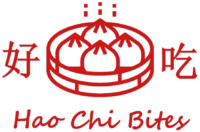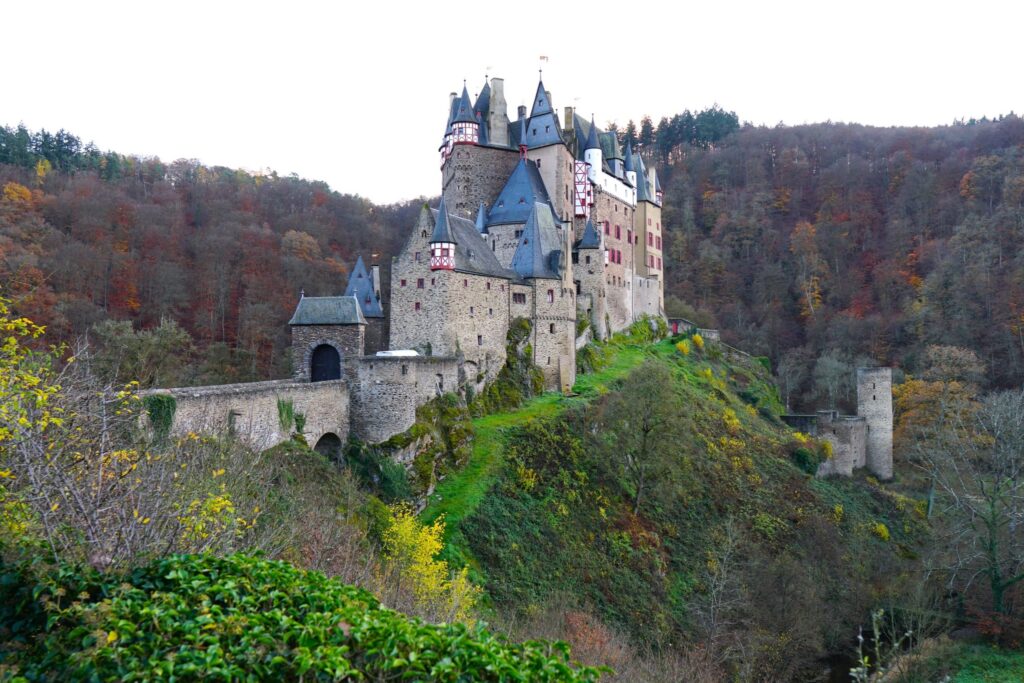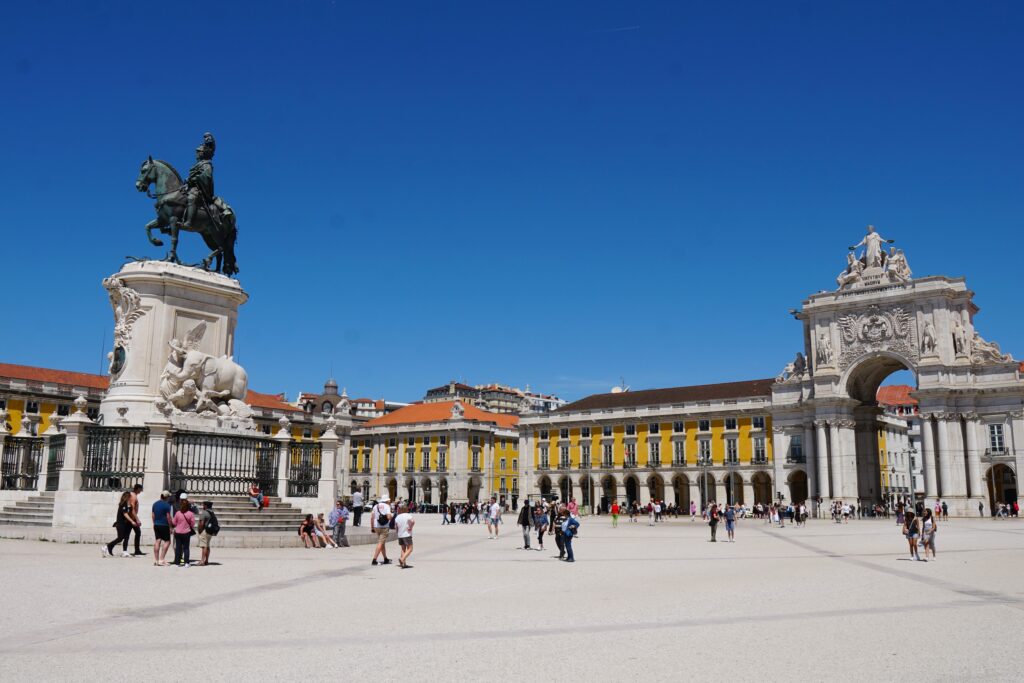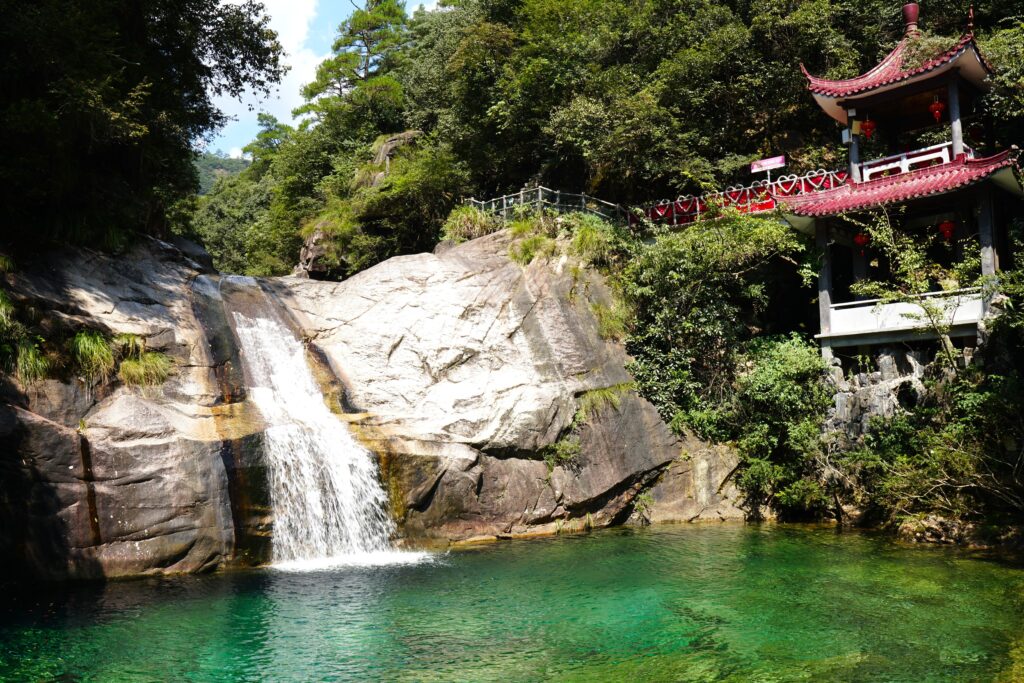This time for a leisurely road trip, we took drive to Cochem, a beautiful town along the Moselle River, just a couple of hours away from Frankfurt. If you take the highway, the journey is faster, about 2 hours. But if you have time and a heart for scenic beauty, the B9 route along the Rhine and the B49/416 routes along the Mosel offer sweeping river views and rolling vineyards, though it takes closer to 4 hours.
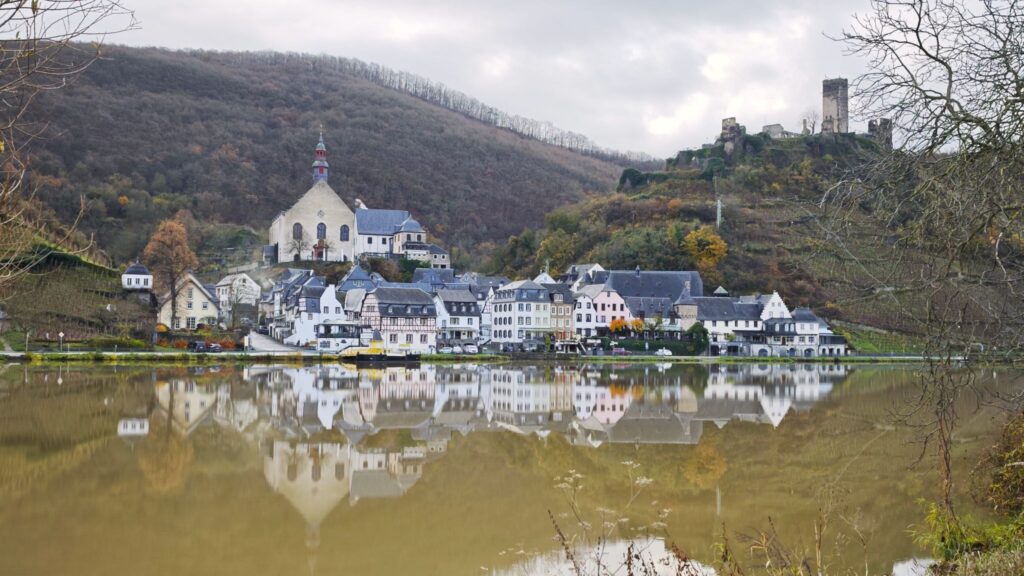
Traveling in the off-season is a serene escape—just the soft hum of the road and the promise of calm. The drive felt like shedding the weight of busy days, replaced by the gentle sunlight of the Moselle valley.
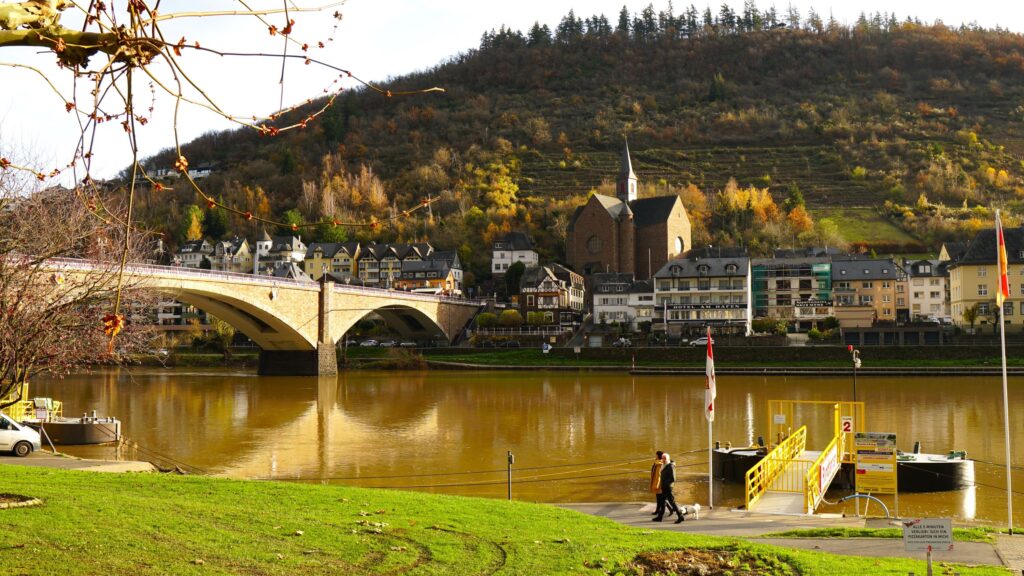
In Cochem, life slows to a comforting rhythm. Walking along the riverbank, we could see the Reichsburg Cochem – a medieval castle, perched gracefully on a hill, against the late autumn sky.
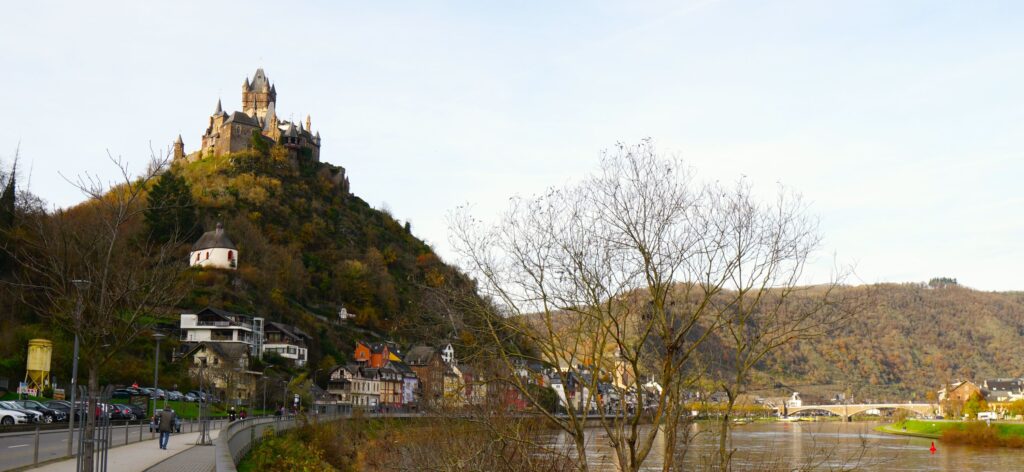
An apple tree stood near the water’s edge, adding a stroke of mischief and a sense of life to the scene, its reflection mirrored in the gentle ripples of the Moselle. The late autumn sunlight was precious, casting a soft, tender glow over the river.
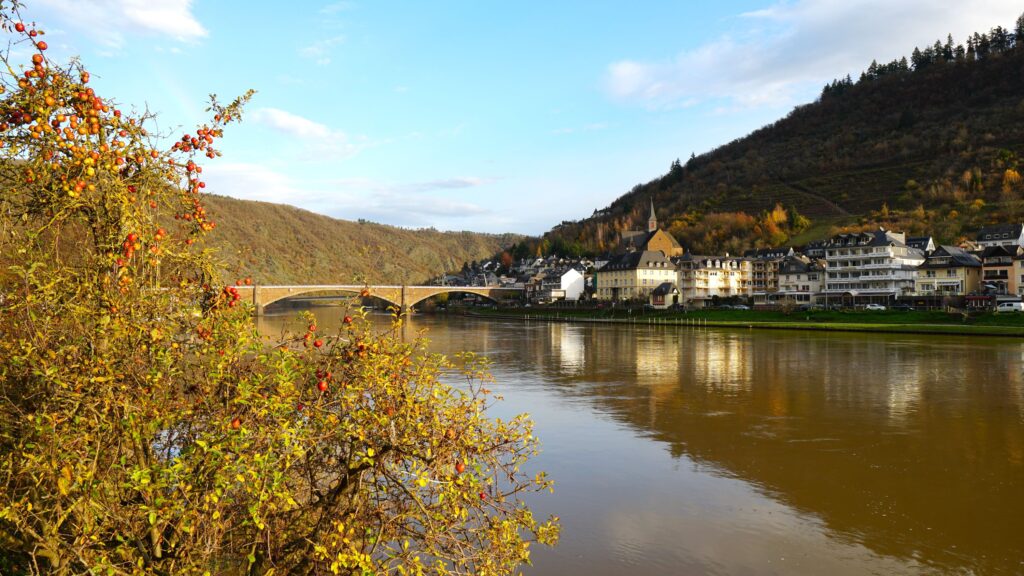
Walking through Cochem is like stepping into a storybook. On our way up to the Reichsburg Castle, the time seems to flow as gently as the river itself.
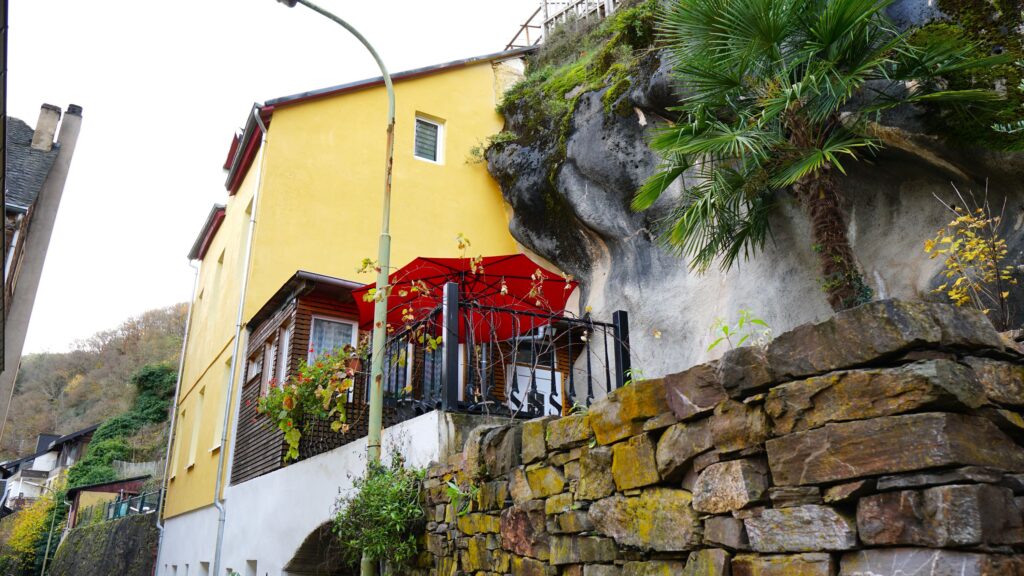
The air in Cochem is fresh and crisp, carrying the faint, earthy aroma of the nearby forests. Many houses are built with sturdy walls that follow the contours of the hilly terrain. Some homes are cloaked in ivy, lending an air of mystery, as if they belonged in a fairytale forest.
The windows often have rounded tops, as do some doors—a medieval design choice that’s not just visually pleasing but practical. The rounded shape helps to distribute weight evenly across the structure, which was essential in the era of stone construction.
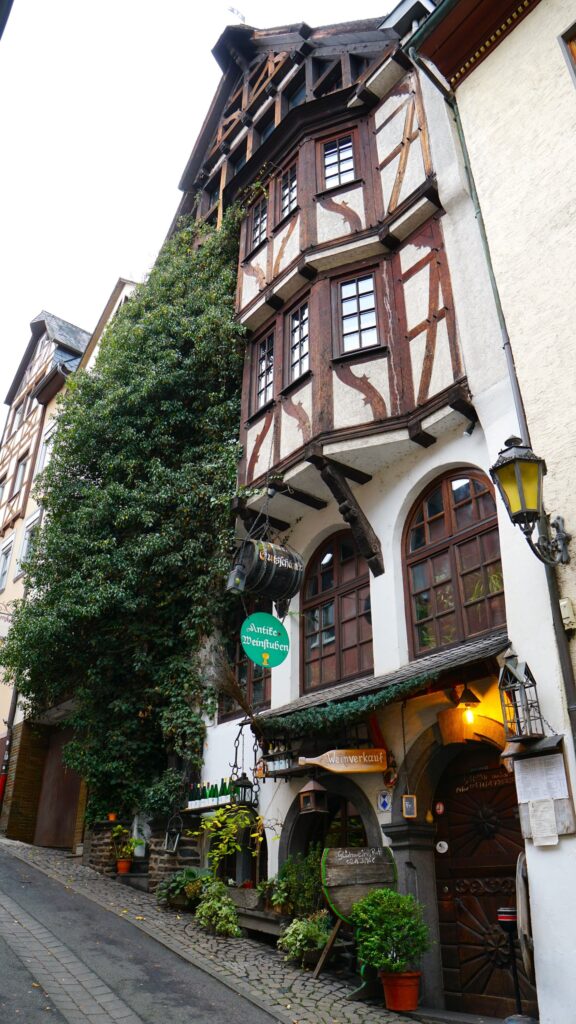
Some buildings are a deep, dark brown, giving the town a warm, rustic charm. The Fachwerk (half-timbered) style is prevalent, with exposed wooden beams crisscrossing over plaster or stone walls, creating a distinctive checkerboard pattern.
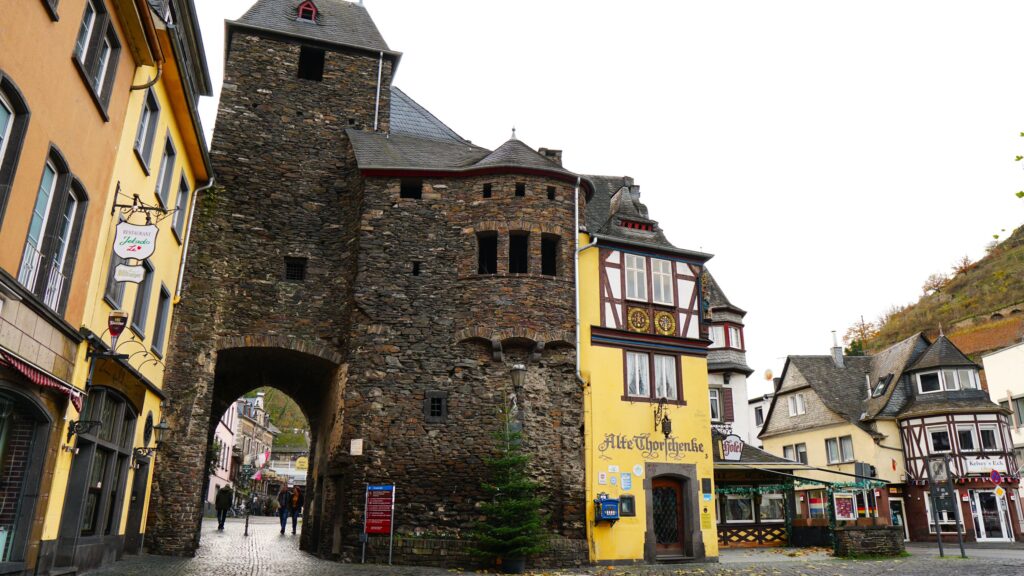
Many signposts hang above the shops, a medieval way to advertise the business inside. These signs, often with symbols or images, were once crucial in guiding people, as literacy was limited. Together with the architecture, they unmistakably exude a medieval vibe.
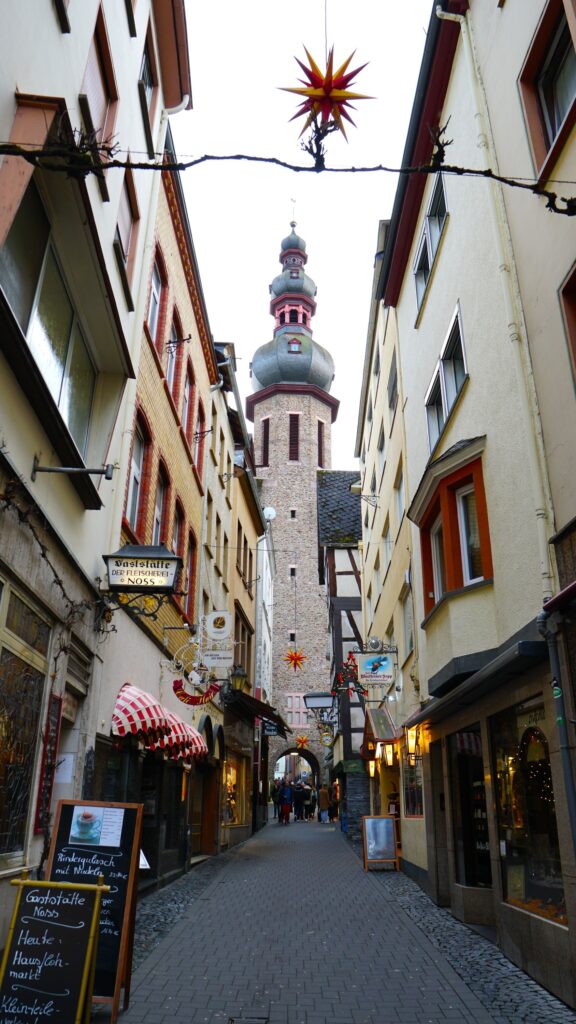
A short climb up a gentle hill brought us to the Reichsburg Castle, a striking structure that blends Gothic and Romanesque elements. Its dark stone walls, accented by by brown wooden windows and crowned with pointed spires, give it an almost fairytale-like allure. The sharp angles and formidable battlements evoke a sense of strength and storied past.
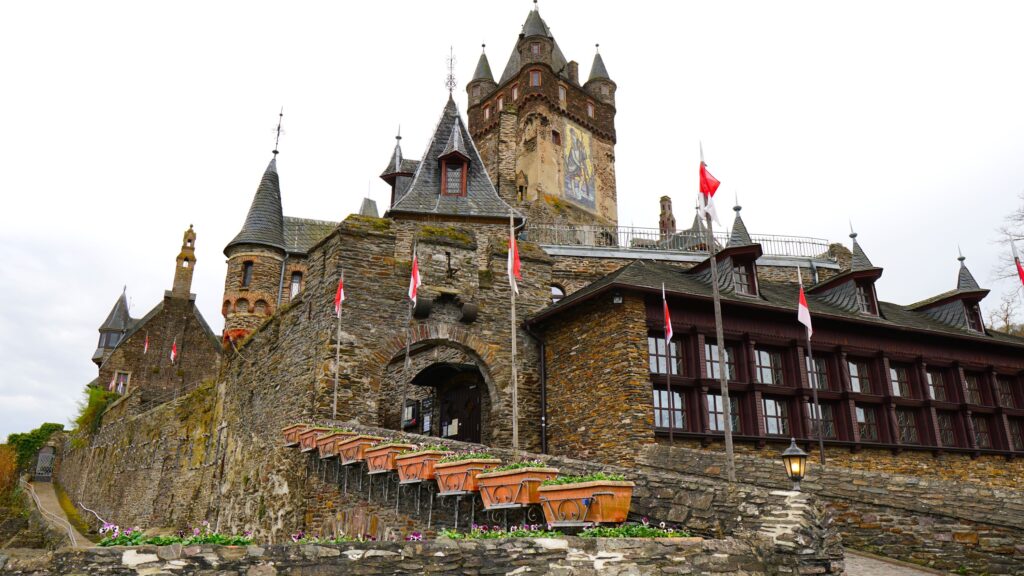
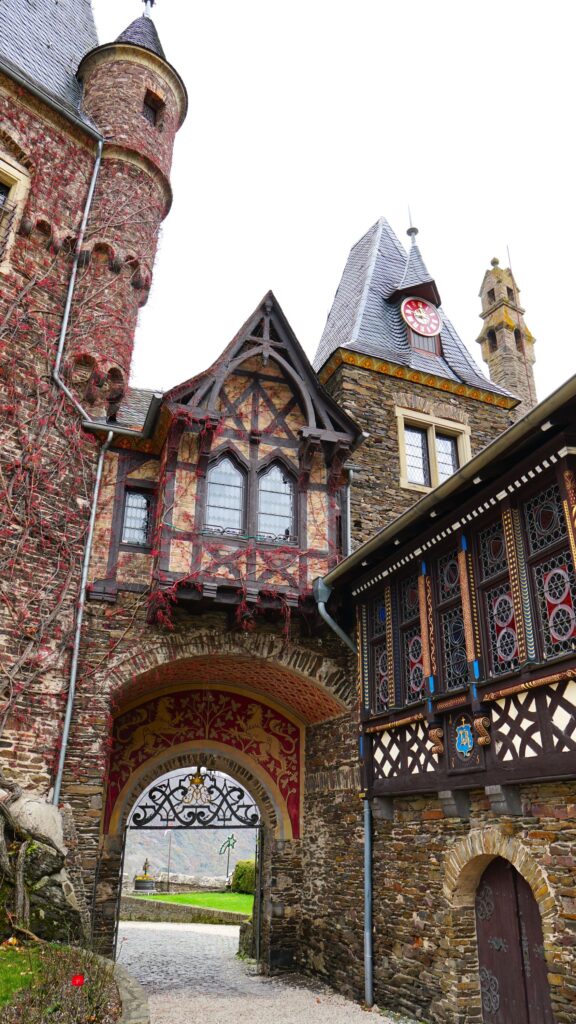
The castle was rebuilt in the mid-19th century by a French aristocrat, Louis Ravene, as a grand summer retreat for his beloved lady. Tragically, before its completion, she mysteriously disappeared. Some say she never even set foot in the castle, leaving it to stand as a poignant monument to an unfulfilled love.
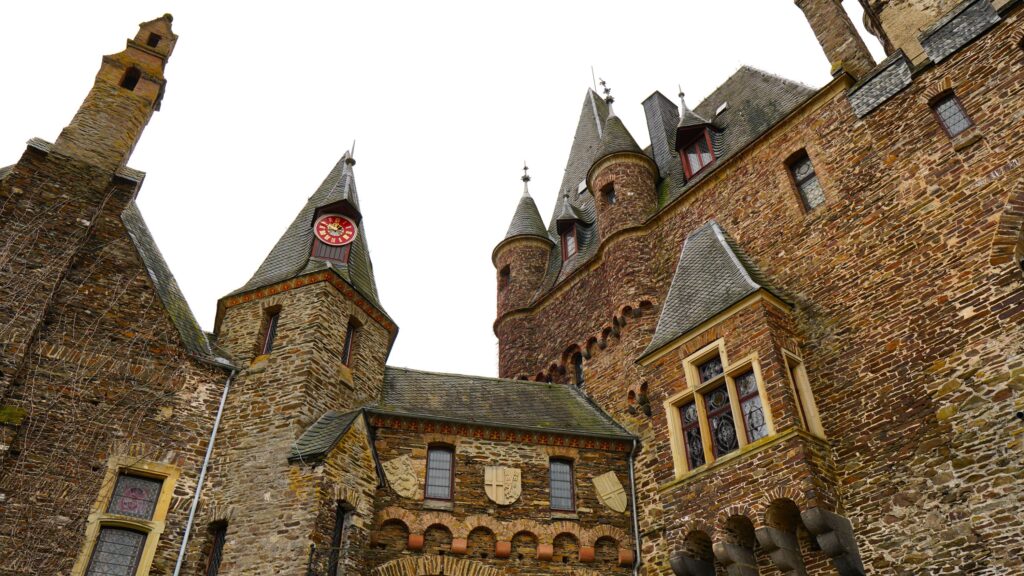
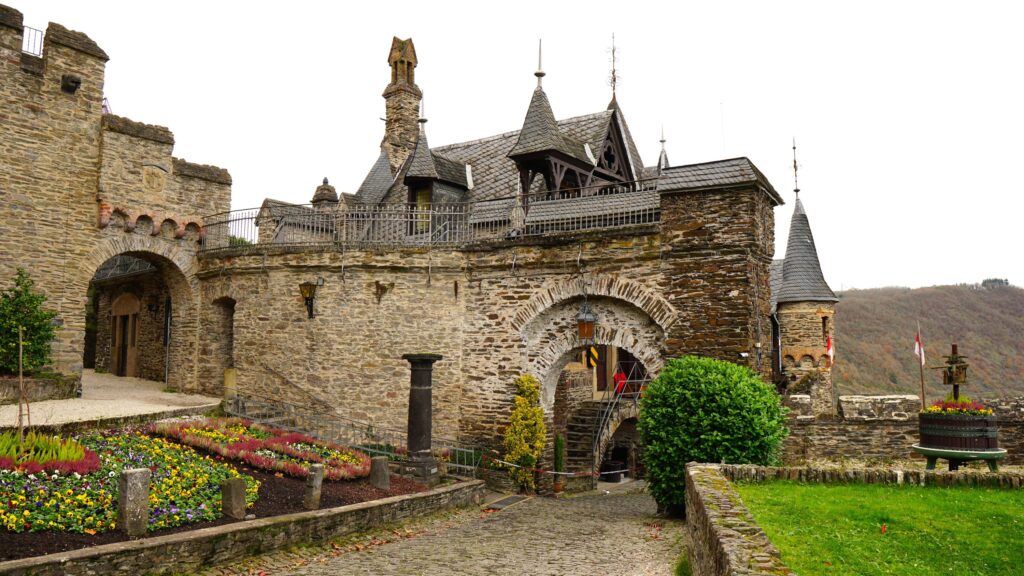
Exploring Reichsburg takes about an hour. A ticket (about 9 EUR pro adult) includes a guided tour in both German and English, and translated scripts are available for other languages, such as Chinese.
From the castle’s hilltop perch, the views of the winding Moselle River are spectacular. The river curves through the valley below, dotted with quaint houses on the hillsides. When the sunlight pierces the clouds, casting a warm glow over the landscape, the view takes on a veil of grandeur, yet an undeniable tranquility.
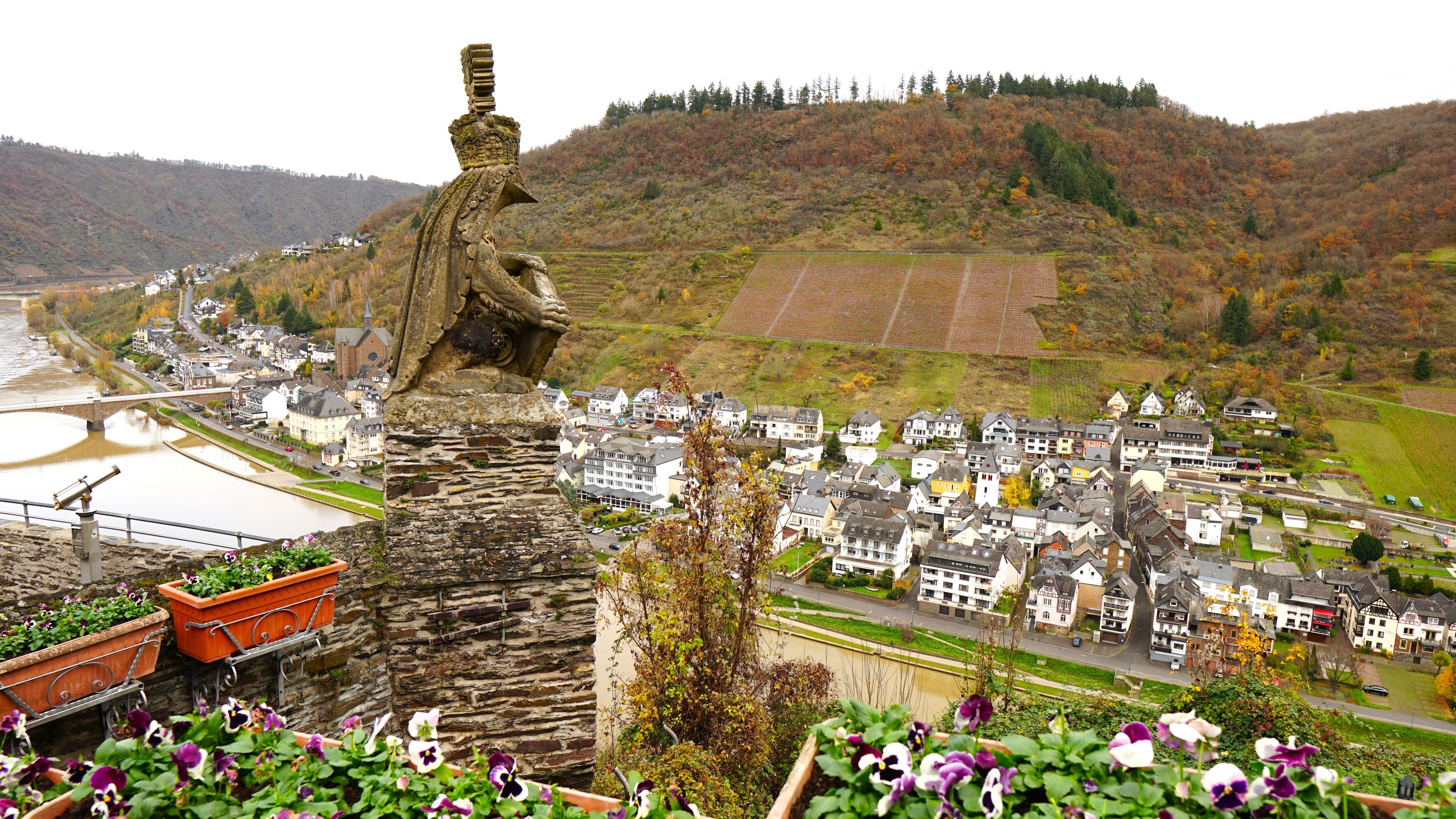
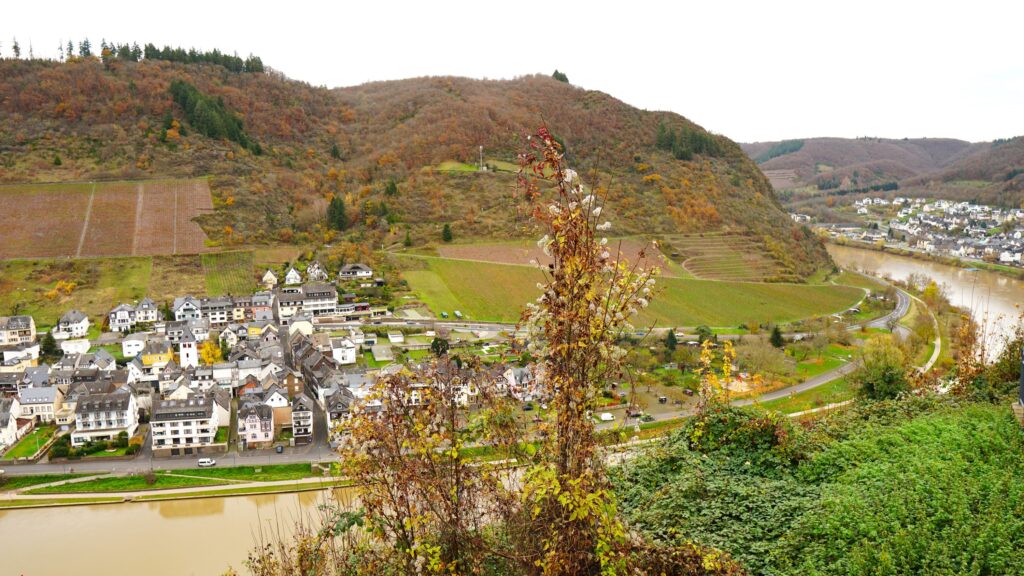
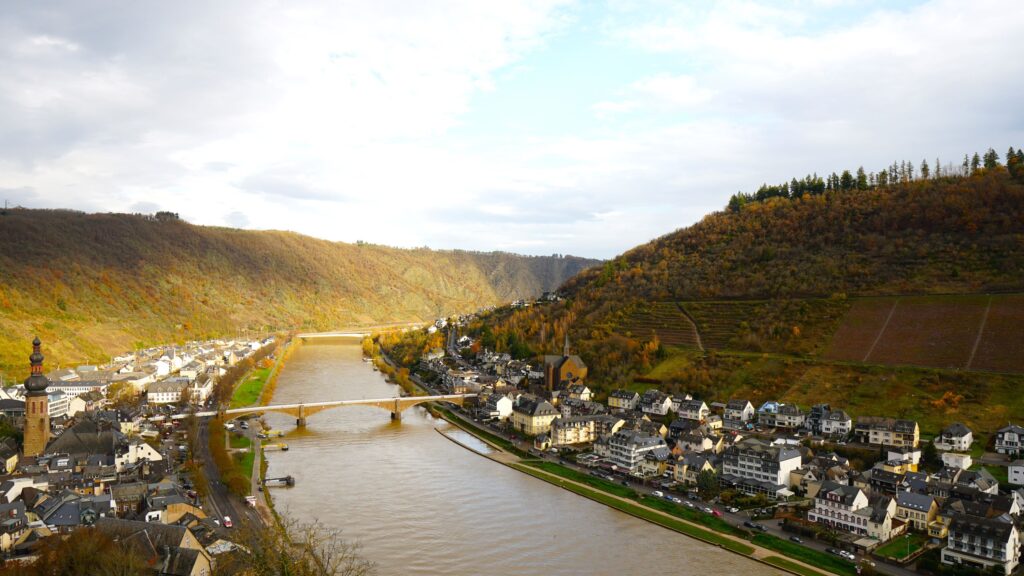
Inside, the castle boasts opulent interiors. Lavish chandeliers hang from high ceilings, carved wooden chairs surround grand tables, and ornate fireplaces radiate an old-world elegance.
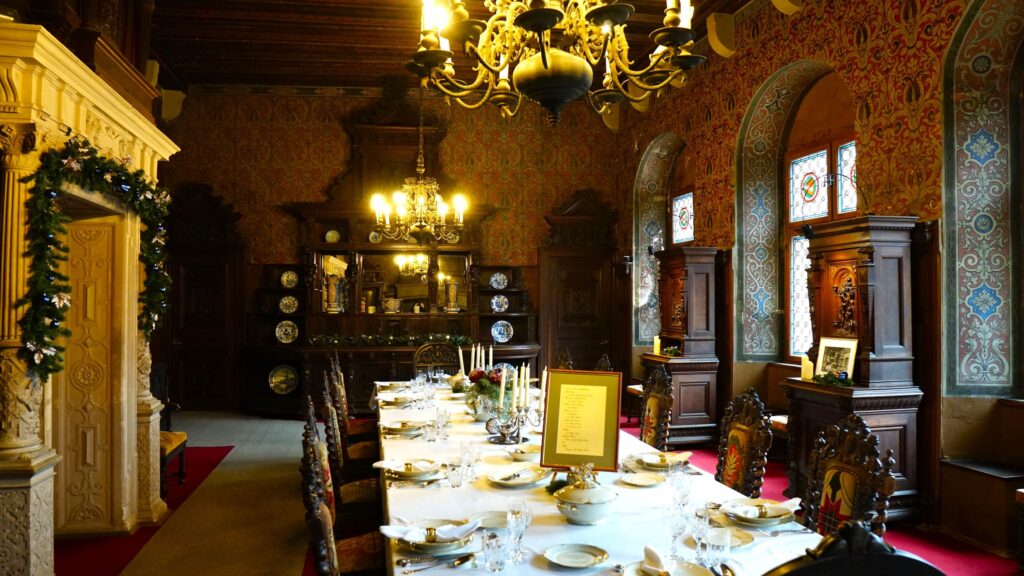
One highlight is the reception hall, where, during our visit just before Christmas, a towering Christmas tree stood, filling the space with a festive warmth and holiday cheer.
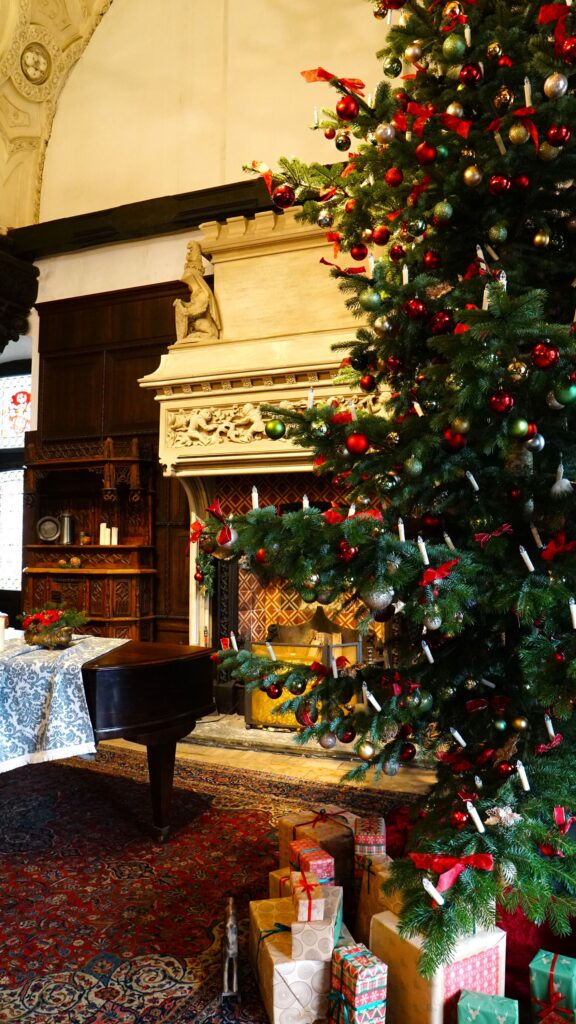
Just a short 30 to 40-minute drive from Cochem lies the iconic Burg Eltz. Built in the 12th century by the Eltz family, who still own and maintain the castle today, it is one of the few privately owned castles in Germany to have stood intact for nearly 900 years.
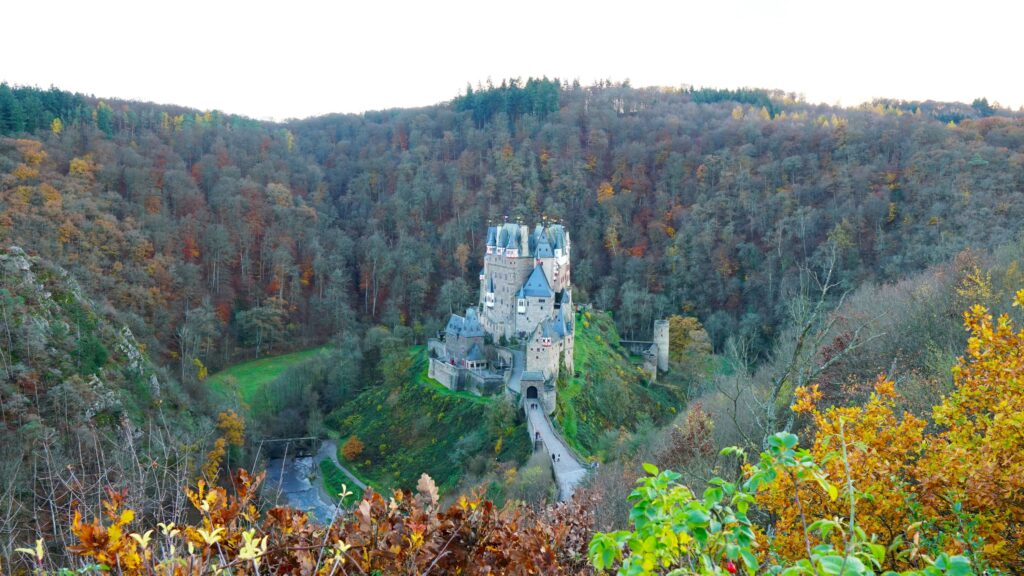
From the parking area, it’s about a 15-minute walk through the woods to reach the castle. As you approach, the first glimpse of Burg Eltz is magical. Standing quietly amidst the forest, it radiates a timeless aura, like a dream, covered in the golden hues of autumn. The vivid tapestry of reds, yellows, and greens surrounding makes you feel like stepping into a medieval fantasy.
Eltz’s secluded setting and its romantic design -from turrets stretching skyward to its sturdy stone walls – everything about Burg Eltz whispers of knights, hidden treasures, and stories of old. No wonder many believe this castle inspired countless fairytales.
If you have more time, there’s a scenic hiking trail around the castle. Along the way you can admire its splendor from different angles. The trail spans 12 kilometers (7.5 miles)and takes about 4 hours to complete.
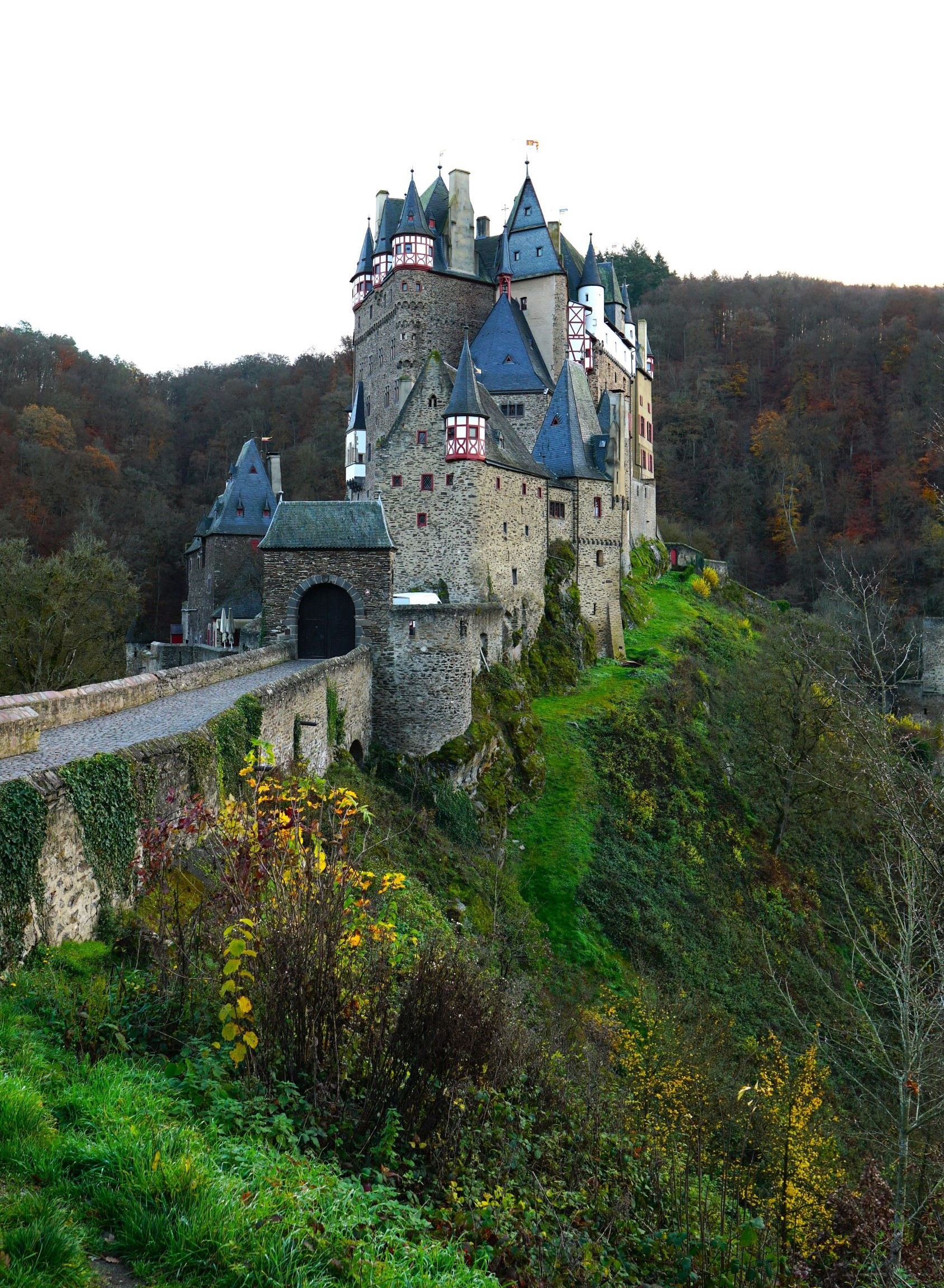
As the sun dips behind the hills, we return from Burg Eltz to the riverside town of Cochem, eager to explore its festive vibe.
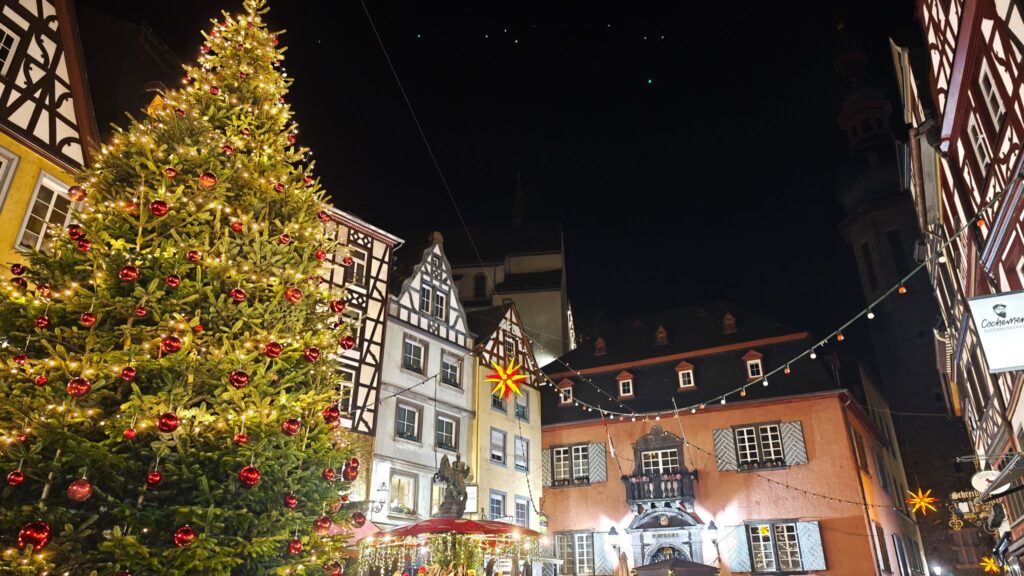
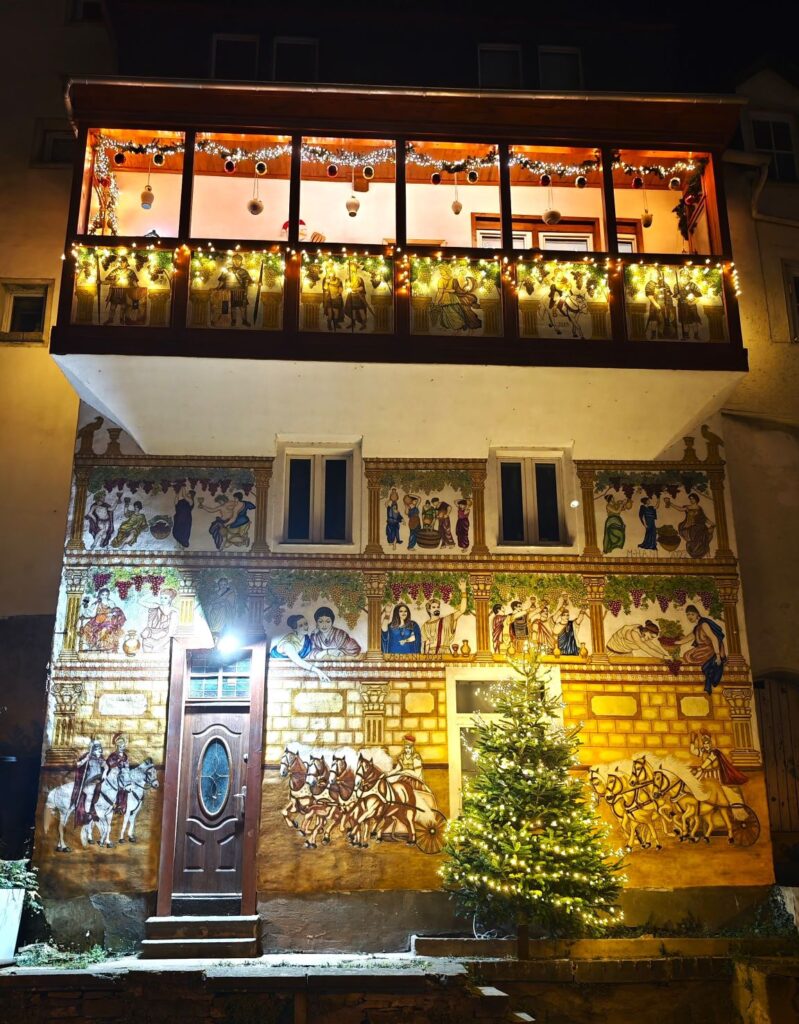
Though the streets are quiet, the spirit of Christmas is glowing everywhere, from the glittering Christmas tree to the enchanting red and yellow Moravian stars. These stars, a cherished German tradition, symbolize the Star of Bethlehem and light up the charming half-timbered houses.
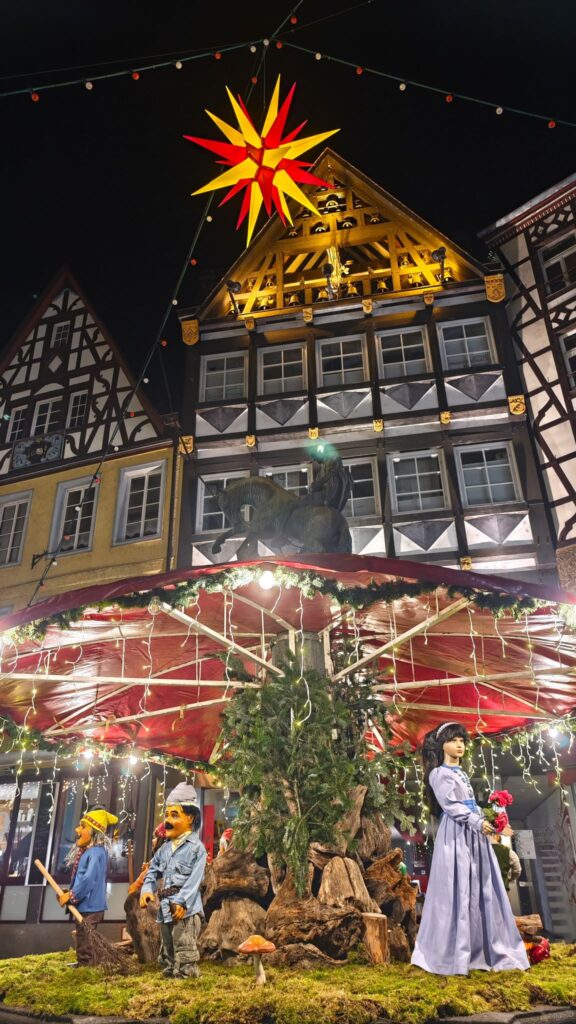
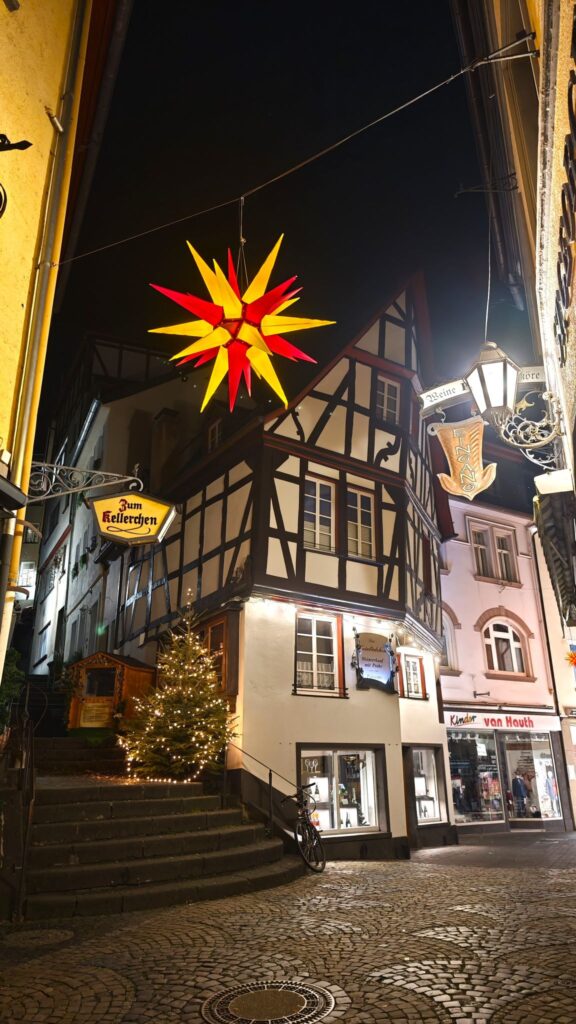
Crossing the bridge to the opposite bank, we are treated to a kaleidoscopic nightscape, with the lights from the town dancing across the water and the Reichsburg Castle bathed in a mysterious red glow.
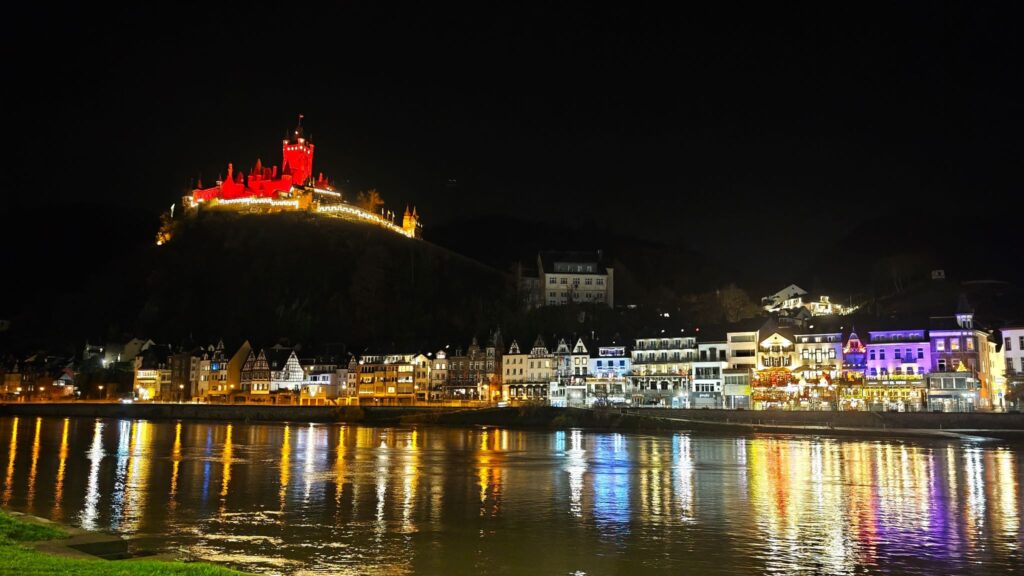
As we continue along the riverside, a serene stillness takes over. Darkness engulfs the path, broken only by the faint rustle of the river and the crunch of our steps on frosted ground. Tilting our heads back, we see a breathtaking canopy of stars. Away from the city’s glare, the night sky in Cochem is in all its purity. There is no one else—just us, the stars, the trees, and our quiet steps. Surprisingly, the solitude in the pitch black doesn’t feel unsettling; rather, it brings a profound sense of calm and grounding.
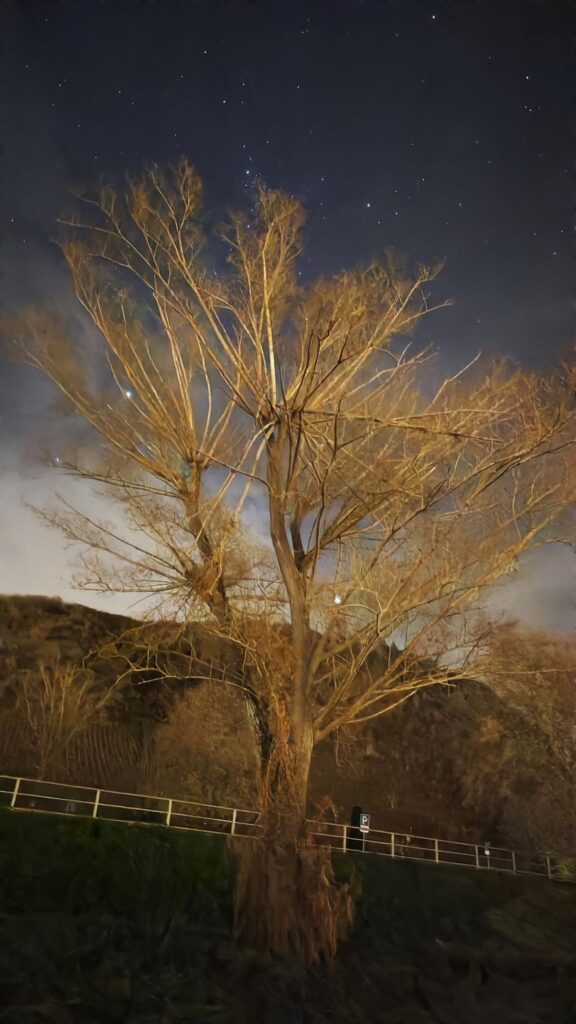
More tips for your visit:
- Where to stay:
- Cochem offers a variety of options, from boutique hotels near the river with vineyard views to charming guesthouses near the town center.
- Prices range from €60 to €250+ per night, many are within easy reach of both Reichsburg Castle and the Moselle River.
- How to Get to Cochem Without Driving:
- You can easily reach Cochem by train (from nearby cities like Koblenz or Trier).
- Alternatively, buses and riverboats also provide scenic routes to Cochem, though they may take longer. Once there, the town is easy to explore on foot.
- Is One Day Enough for Both Castles?
- One day can be enough to visit both Reichsburg and Burg Eltz, though it might feel rushed. You can visit Reichsburg in about 1-1.5 hours and spend 2-3 hours at Burg Eltz, especially if you plan to take the guided tour.
- If you decide to hike around Burg Eltz, it could take up most of your day.
- Eltz Castle Visiting Hours:
- Open daily from April 1 to November 1, 9:30 AM – 5:00 PM. Last entry at 5:00 PM, final tour at 5:30 PM. Tickets are €14 per adult and include a guided tour in German and English (more info here).
When it comes to food, Cochem can sometimes feel like a maze of tourist traps, with restaurants serving overpriced, mass-produced meals – a common pitfall in popular travel destinations. While the food might not be awful, it’s wise to check Google reviews before deciding where to dine. Walking into just any spot might leave you disappointed, especially in the off-season when some restaurants have shorter hours or don’t open at all.
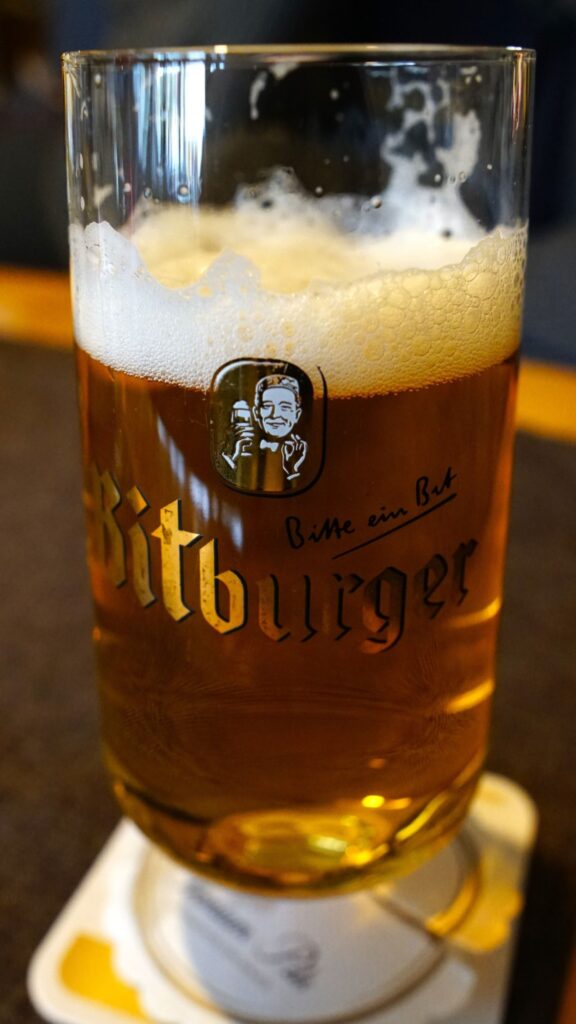
Luckily, we found a cozy place that gave us a proper taste of local German cuisine: Gaststätte Noss. Alongside hearty dishes, we enjoyed a crisp glass of Bitburger, a classic German pilsner popular in the Moselle region. The restaurant also introduced us to the famous Moselle mustard—a regional specialty with a tangy kick that’s perfect with sausages or pretzels. You can also pick up a jar as a souvenir from many of Cochem’s boutiques or local food stores.
The first dish is a classic – Breaded Pork Schnitzel with French Fries and Mushroom Cream Sauce (Schweineschnitzel mit Pommes Frites und Champignonrahmsauce)– the best example of rich, hearty, homey German flavors.
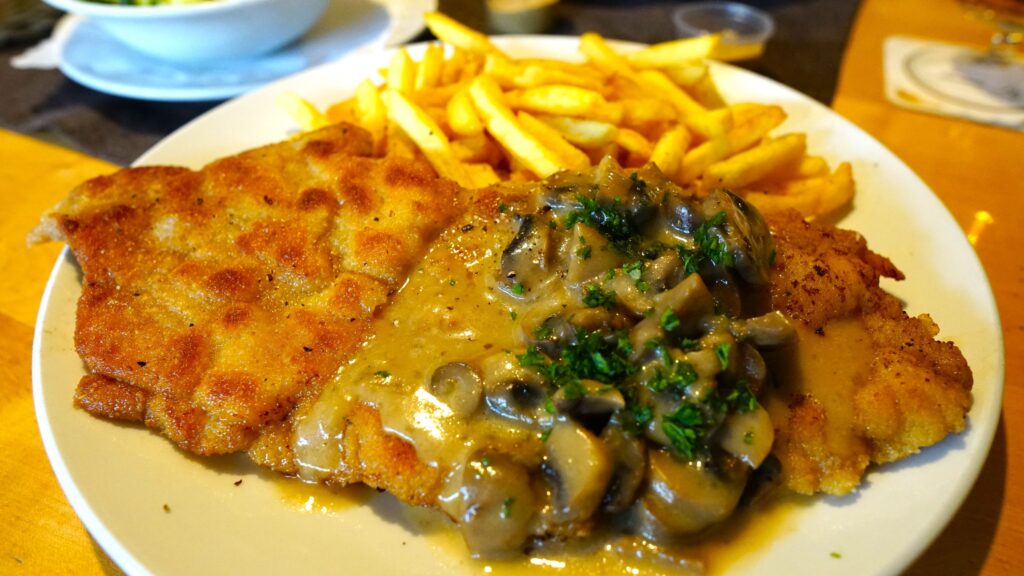
The schnitzel is golden and crispy on the outside, with a perfectly thin, light crust that enhances the meat flavor without overpowering it. When you cut into the tender pork, the meat is surprisingly juicy and very flavorful. A sprinkling of parsley on top adds an aromatic freshness that balances the richness of the pork.
The mushroom cream sauce is velvety and smooth, with earthy mushroom chunks that provide a juicy, savory flavor. It gives each bite of schnitzel a luscious, creamy finish, nicely complementing the crispy meat and the fluffy fries.
The Hearty Butcher’s Platter (Deftige Schlachtplatte) is a robust traditional German dish. This feast features an assortment of savory meats including blood sausage(Blutwurst), liver sausage (Leberwurst), bratwurst, pork knuckle (Eisbein), and pork belly (Bauchfleisch), each bringing its unique flavor –
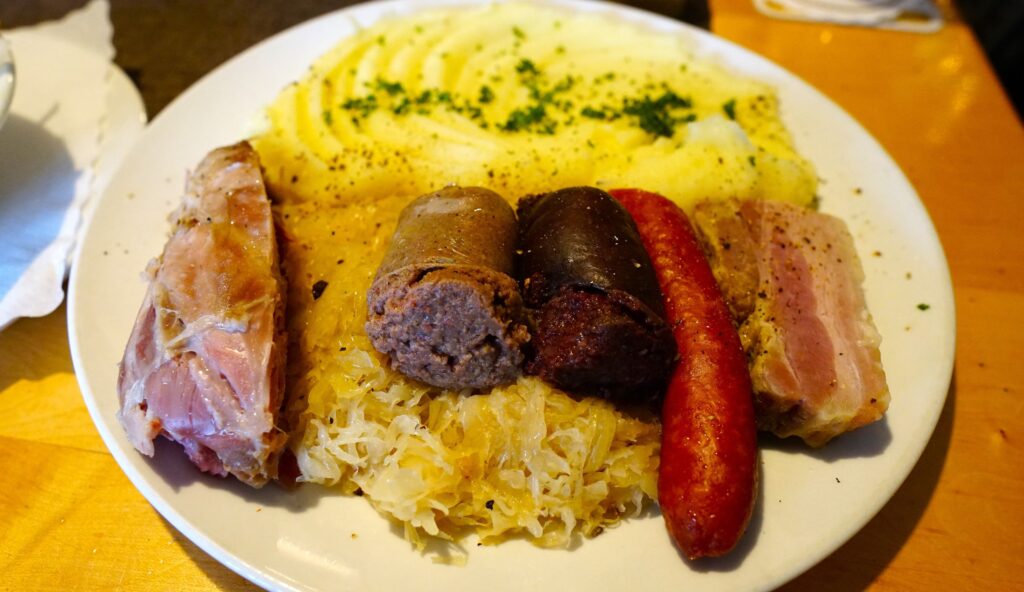
The blood sausage is rich and earthy, with a deep, slightly metallic flavor from the blood. It’s dense and has a smooth creaminess that contrasts with the firmer meats on the plate. The liver sausage has a velvety texture with a mild, subtly spiced flavor. It’s slightly gamey, but overall has a smooth, comforting mouthfeel.
The bratwurst offers a more delicate seasoning, with a crispy, chewy skin encasing a juicy, tender interior. The pork knuckle is our favorite. It’s incredibly tender and slightly salty, with a smoky, savory depth. Lastly, the pork belly brings a luscious layer of juicy fat that enhances the richness.
The potato puree, creamy and smooth, acts as a perfect neutral base, grounding the dish. Together with the sauerkraut – a tangy, slightly sour, and fermented cabbage – the platter achieves a delicious balance of savory, rich, zesty, and comforting flavors. It’s a true representation of classic German flavors.
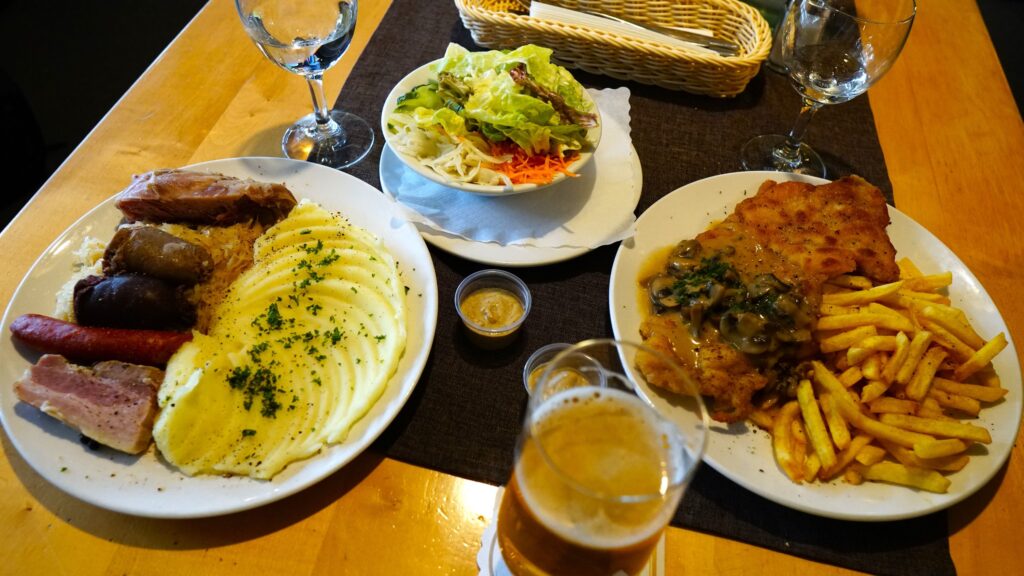
As we savor the last bites of tasty German cuisine, it’s time to set our sights on our next trip. And we’re off to Luxembourg City, where history, culture, and traditional Luxembourgish food await. Stay tuned and auf Wiedersehen!
